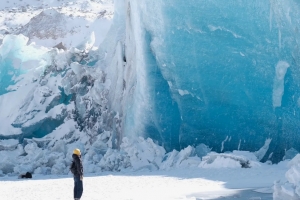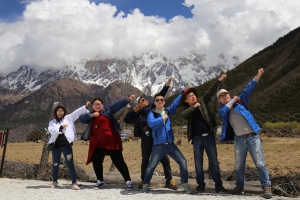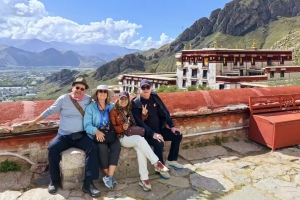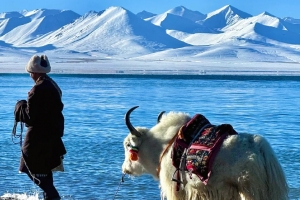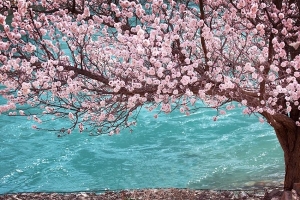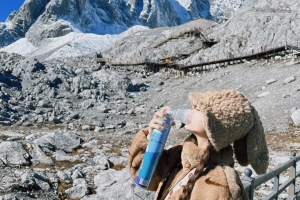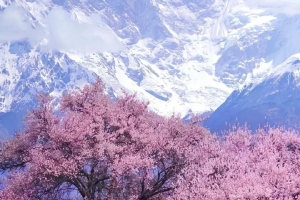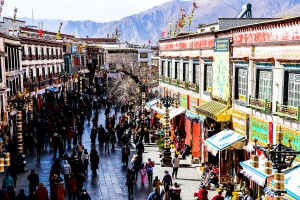Tibetan people, numbering approximately 7.7 million today, are the indigenous inhabitants of the Qinghai‑Tibet Plateau and one of China’s most significant ethnic minorities. With a recorded history stretching back over 1,300 years, their cultural identity has been shaped by the rise of the Yarlung dynasty, the spread of Tibetan Buddhism, and centuries of nomadic pastoralism. From traditional chubas and stone‑walled homes to butter tea, tsampa, and elaborate festivals like Guozhuang and Wangguo, Tibetan lifestyles blend practicality with artistic expression. Although modern influences and resettlement programs are altering traditional patterns, Tibetans continue to uphold their language, religion, and crafts—ensuring that their rich heritage endures for generations to come.
Tibetan Demographics and Distribution
Tibetans are estimated at around 7.7 million, primarily residing in the Tibet Autonomous Region, where they make up over 90 percent of the population. Smaller but significant communities of Tibetans also live in Qinghai, Sichuan, Gansu, and Yunnan provinces in China. Beyond China, Tibetan speakers can be found in neighboring regions of India, Nepal, and Bhutan, reflecting centuries of migration and cultural exchange. Despite an average elevation exceeding 4,000 meters, Tibetans thrive in both urban centers—such as Lhasa, Shigatse, and Chamdo—and vast nomadic grasslands.
Tibetan Historical Origins
The earliest organized Tibetan state emerged in the Yarlung Valley, south of Lhasa, where the Yarlung dynasty was founded around 127 BC. By the seventh century, King Songtsen Gampo united disparate tribes, established Lhasa as the capital, and ushered in the imperial Tubo Kingdom. His marriage in 641 CE to Princess Wencheng of the Tang dynasty cemented political and cultural ties with China. Over the next centuries, Tibetan emperors expanded their realm across Central Asia, facilitating the spread of Vajrayāna Buddhism and forging the region’s distinctive spiritual identity.
Tibetan Lifestyle and Occupations
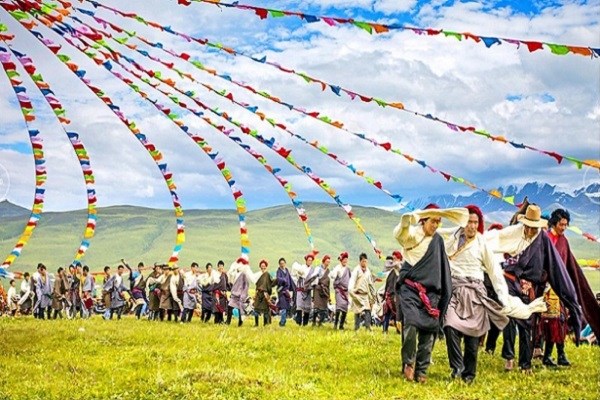
Traditional Tibetan life revolves around livestock and agriculture. In pastoral regions, nomadic herders raise yaks, sheep, and goats, relying on animal products for food, clothing, and fuel. Yaks, in particular, are indispensable—providing meat, milk, fiber, transport, and dung for heating in treeless highlands. In river valleys and lower elevations, farmers cultivate high‑altitude crops like barley, the base of tsampa (roasted barley flour), which is mixed with butter tea for sustenance. Urban Tibetans increasingly engage in craftsmanship—creating thangka paintings, wood carvings, and metalwork—as well as small‑scale trade and tourism services. Modern economic programs have also introduced handicrafts, mining, and agricultural mechanization, diversifying income sources across the region.
Tibetan Traditional Clothing
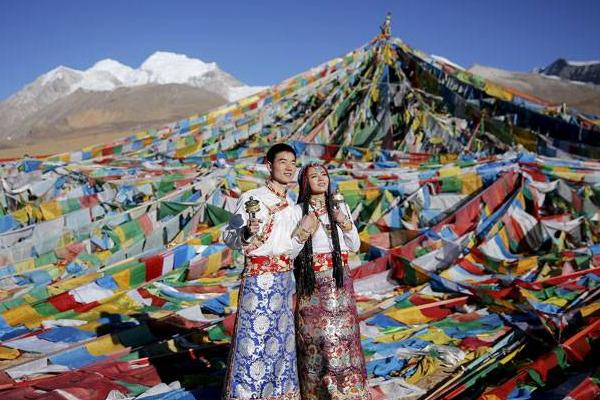
Tibetan attire is both functional and emblematic. The chuba, a thick, ankle‑length robe often made from wool or yak leather, provides essential warmth against subzero temperatures. Sleeves can be unbound and used as makeshift blankets or pillows at night, illustrating the garment’s adaptability. Women accessorize with coral, turquoise, and silver jewelry, while men adjust their chubas at the waist to suit weather and activity . During festivals and ceremonies, Tibetans don brocade robes, elaborate headdresses, and layered ornaments to symbolize social status and regional identities.
Tibetan Housing and Architecture
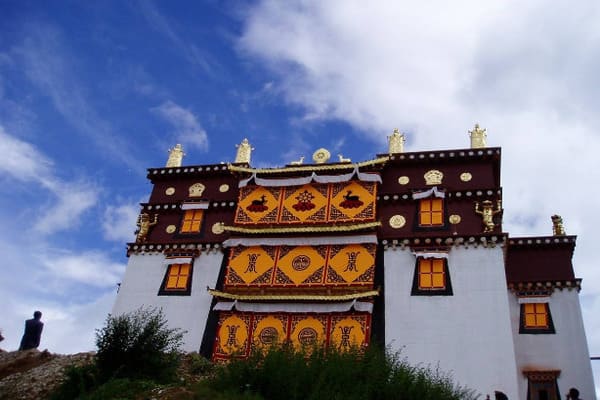
Permanent Tibetan homes, common in towns and villages, feature thick stone or rammed‑earth walls—up to 80 cm thick—to insulate against harsh winters. Flat roofs are layered with earth and often oriented southward to maximize solar heat gain. Interiors include raised platforms for seating and sleeping, and most families maintain a small shrine room with statues, thangkas, and prayer flags. Nomadic families set up yak‑hair tents—square structures supported by wooden poles—that withstand high winds and can be easily packed for seasonal migration. Traditional monasteries and temples, such as the Jokhang and Sera in Lhasa, exhibit multi‑tiered wood and stone construction, often adorned with intricate murals and gilded roofs.
Tibetan Cuisine and Beverages
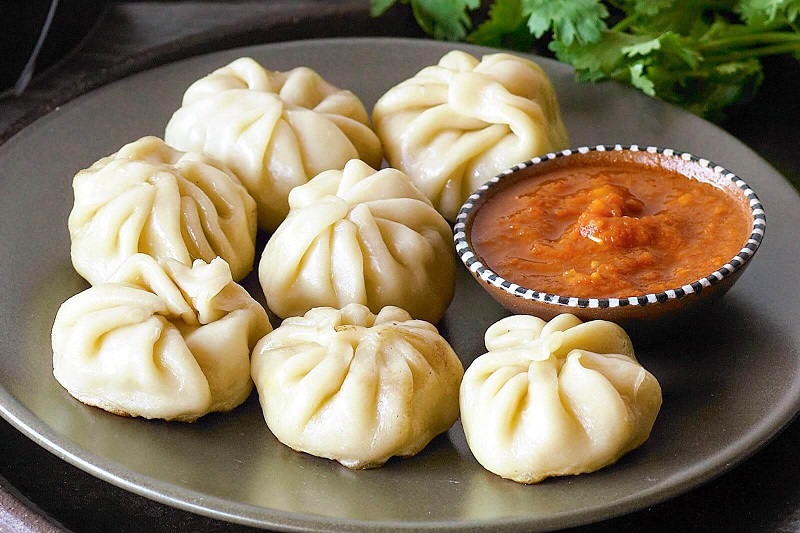
Tibetan cuisine emphasizes high‑calorie, warming foods adapted to high altitudes. Tsampa, a staple of roasted barley flour mixed with butter tea or water, provides sustained energy during long days outdoors. Meat dishes—predominantly yak and mutton—are dried, smoked, or stewed, often accompanied by cheese, yogurt, and other dairy products. The famed butter tea blends tea leaves, yak butter, salt, and sometimes soda, serving as both a beverage and calorie‑rich soup. Barley wine (chang) and sweet tea are enjoyed on festive occasions, while local breweries in Lhasa produce Tibetan‑style beers.
Tibetan Religion and Belief Systems
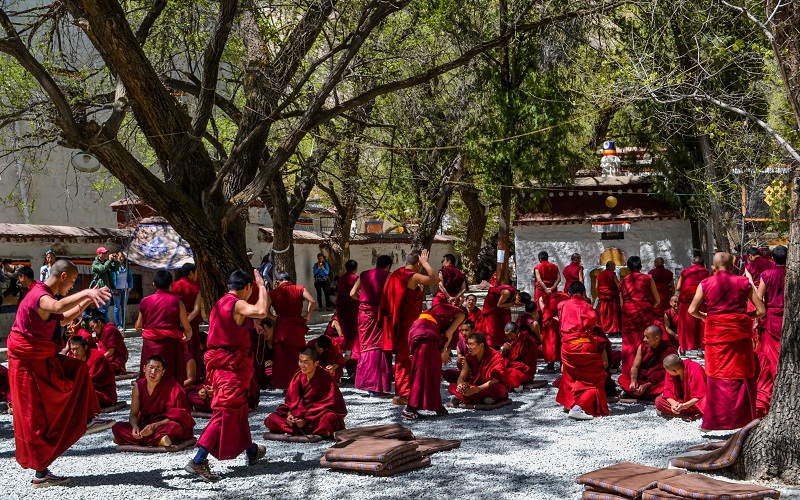
Tibetan Buddhism, the predominant faith, merged with indigenous Bon practices to form a unique Vajrayāna tradition. Monasteries like Jokhang and Sera serve as spiritual and educational centers, where monks study scriptures, meditate, and perform communal rituals. Devotees circumambulate sacred sites, spin prayer wheels, and hang prayer flags to invoke blessings and merit. While Buddhism remains central, small communities of Bon practitioners, Muslims, and Christians exist in urban areas—reflecting Tibet’s historical ties with neighboring regions.
Tibetan Language and Communication
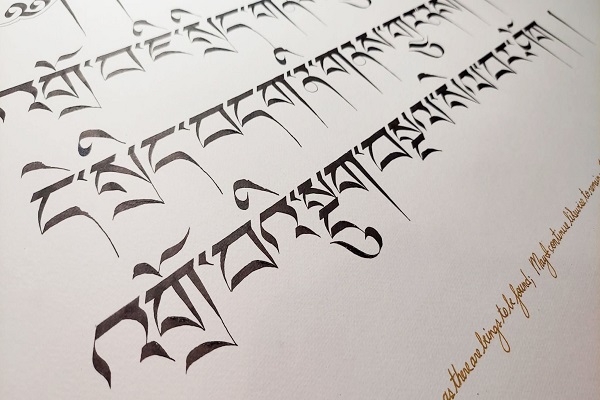
The Tibetan language family includes over 50 Tibetic languages and more than 200 dialects, grouped into major branches: Central (Ü‑Tsang), Amdo, and Kham. These spoken variants can be mutually unintelligible, yet they share a unified script—a legacy of the seventh‑century introduction of writing adapted from ancient Indic alphabets. Classical Tibetan remains the liturgical and literary standard, preserving centuries‑old manuscripts and religious texts. In modern times, Mandarin and English are increasingly used in education, business, and tourism, while Nepali and Hindi facilitate regional trade along Himalayan corridors.
Tibetan Arts, Music, and Festivals
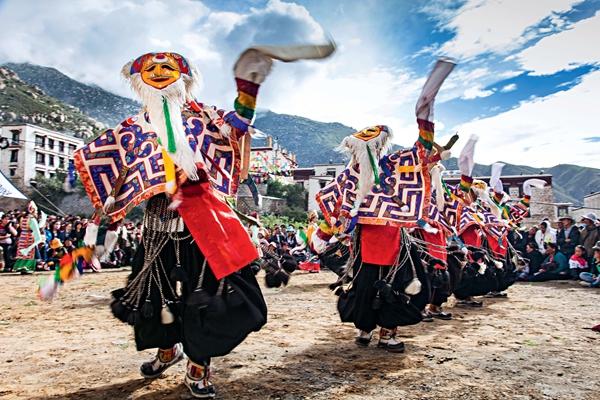
Tibet’s artistic legacy is evident in thangka paintings—vivid scrolls illustrating Buddhist iconography—and intricate wood carvings found in monasteries and homes. Music and dance flourish during seasonal festivals. The Guozhuang dance, celebrated after spring planting, and the Wangguo harvest festival feature singing, circle dances, and field rituals dating back over 1,500 years. Horse racing, archery contests, and stone‑lifting competitions at events like the Horse Racing Festival showcase physical prowess and communal solidarity. These vibrant expressions affirm Tibetan identity and strengthen social bonds across villages and nomadic camps.
Tibetan Modern Challenges and Adaptations
In recent decades, government resettlement initiatives have transitioned many nomads into urban or semi‑urban housing—altering traditional grazing lifestyles and raising concerns over cultural preservation. Education policies mandating Mandarin instruction have further challenged the transmission of Tibetan language and customs to younger generations. Yet, Tibetan artisans and entrepreneurs are innovating; for example, traditional 108‑braid hair styles have been modernized using wigs and yak‑felt threads to suit busy lifestyles while honoring heritage. Tourism, too, offers both opportunities and tensions, bringing economic benefits but also exposing local cultures to external influences.
Embracing the Tibetan Experience with Journey2Tibet
Journey2Tibet offers tailor‑made tours that immerse you in the full spectrum of Tibetan life—from tent‑camp stays on nomad pastures to homestays in traditional stone houses, private audiences at ancient monasteries, and authentic meals of tsampa and butter tea. Our expert Tibetan guides share insider knowledge on local customs, language nuances, and hidden cultural gems. Whether you seek the thrill of horse racing in the highlands, the serenity of dawn prayers at Jokhang Temple, or the warmth of a Tibetan family’s hearth, Journey2Tibet ensures an in‑depth, respectful, and unforgettable journey into the heart of this unique people.

